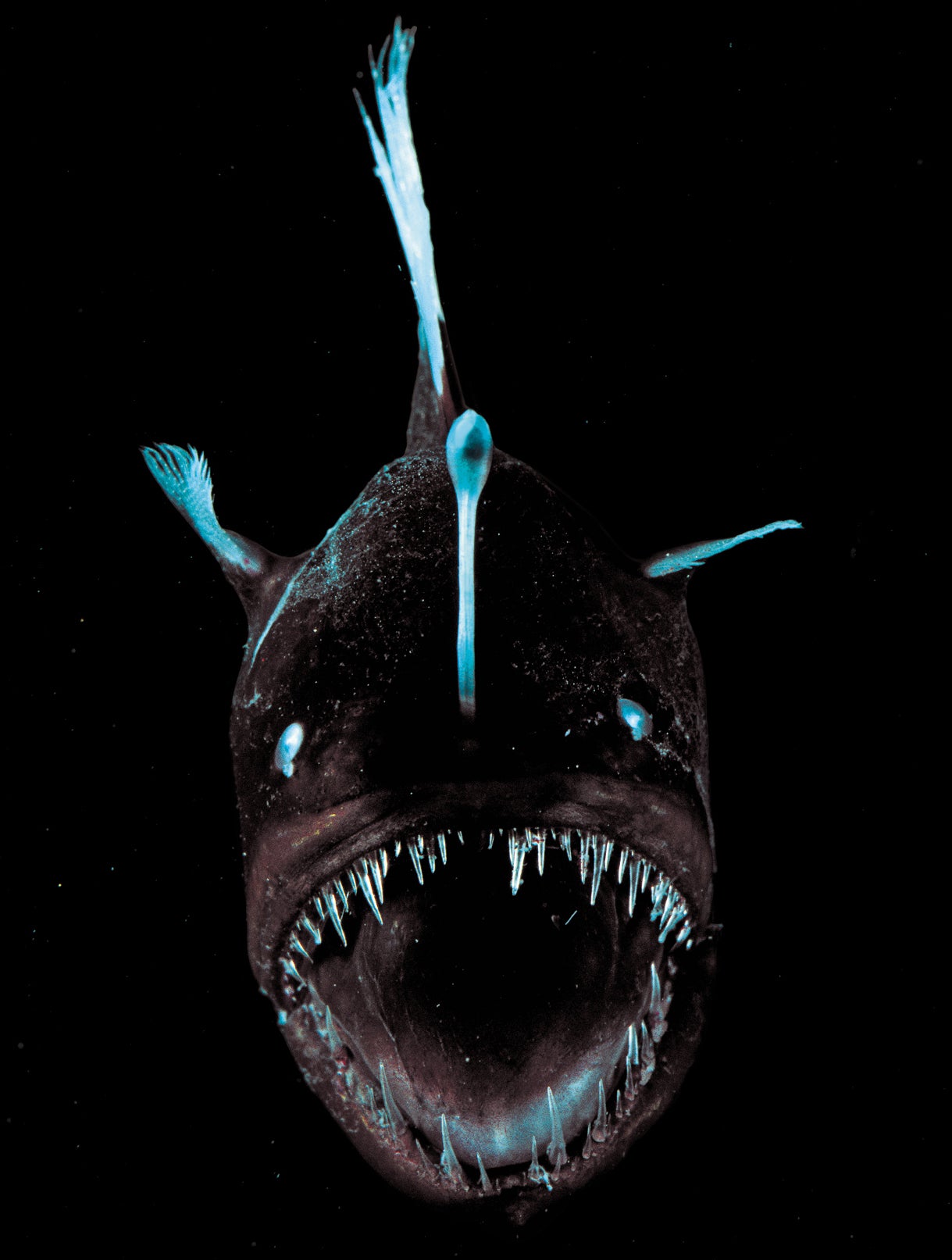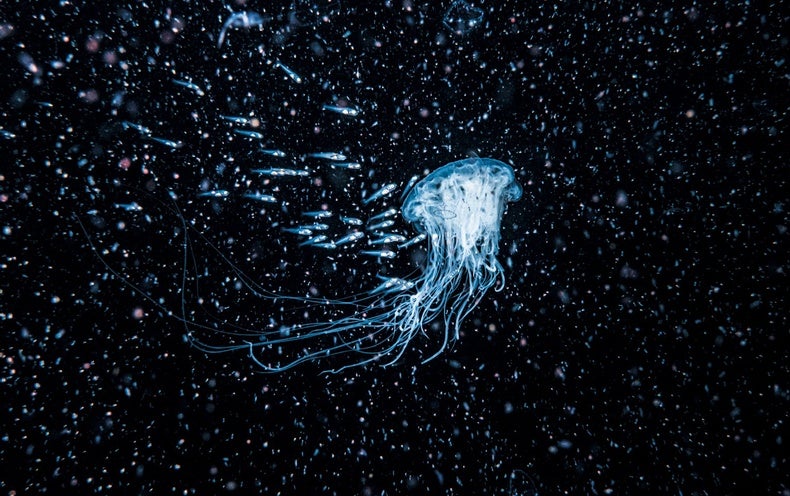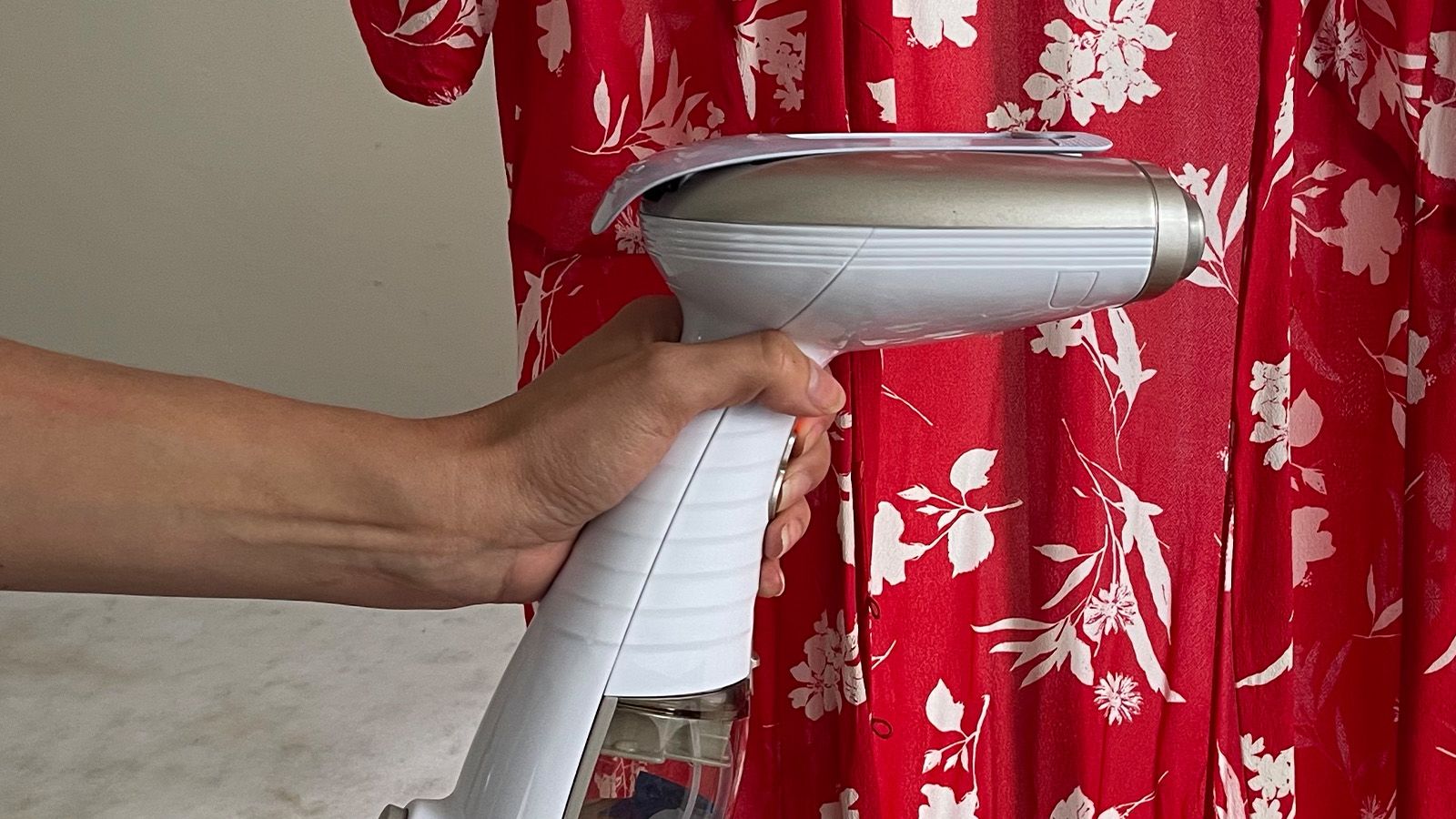On January 30, 1864, the Confederate warship CSS Alabama entered what its captain described as a “remarkable patch of the sea.” The Alabama, sailing southwest along the Horn of Africa, was one of several Confederate vessels cruising the world’s oceans during the U.S. Civil War, weakening the Union by raiding its merchant ships. Formidable pirates though they were, Captain Raphael Semmes and his crew were spooked by the sea they encountered that January evening. “At about eight P.M., there being no moon, but the sky being clear, and the stars shining brightly, we suddenly passed from the deep blue water in which we had been sailing, into a patch of water so white that it startled me,” Semmes recounted in a memoir.
At first he thought that the pale, constant glow indicated a submerged ridge, but a weighted line the crew dropped over the gunwale sank for 600 feet without hitting bottom. “Around the horizon there was a subdued glare, or flush, as though there were a distant illumination going on, whilst overhead there was a lurid, dark sky,” Semmes wrote. “The whole face of nature seemed changed, and with but little stretch of the imagination, the Alabama might have been conceived to be a phantom ship, lighted up by the sickly and unearthly glare of a phantom sea.” The Alabama traveled through the eerie water for several hours, finally exiting the patch as abruptly as it had entered it.
Semmes’s firsthand description is one of the earliest reliable accounts of such a sea, and it has become a valuable, though inadvertent, contribution to science. Now, after combining dozens of historical reports with state-of-the-art satellite data, researchers are close to solving one of the ocean’s most persistent mysteries—its vast, ephemeral displays of ghostly living light.
Silent Dread
The cold radiance emitted by fireflies, some species of fungi and various sea creatures is called bioluminescence. Although it is one of the oldest subjects of scientific study, it is also among the most elusive. Mentions of animal light appear in ancient poetry and songs from many cultures. In the third century B.C.E., Aristotle noticed that if he struck the surface of the sea with a rod, the water sometimes produced a bright blue flash. Three hundred years later Pliny the Elder described light-emitting species of mollusks, jellyfish and mushrooms, adding that the Black Forest of central Europe was rumored to glow with bioluminescent birds (such rumors, though often repeated, were unfortunately never confirmed).
Around 1370 Egyptian zoologist Al-Damiri included bioluminescent insects in his zoological dictionary. And in 1492, during his fateful approach to the Bahamas, Christopher Columbus observed glimmers of light in the ocean—an occurrence that scientists now surmise was produced by bioluminescent marine worms of the genus Odontosyllis, which periodically rise to the water’s surface en masse to perform a circular mating “dance.” In the late 1800s, after centuries of speculation, scientists confirmed that bioluminescence results from an oxidation reaction between an enzyme and its substrate within animal and plant cells. Basic questions remained, however: no one knew what prompted different organisms to glow or what purpose the light might serve.
Most accounts of bioluminescence, on land and at sea, describe blue-green flashes and gleams, sometimes stimulated by disturbance, as with Aristotle’s rod. But reports such as that of Captain Semmes suggested a very different phenomenon. The seawater plied by sailors was suffused with steady white light, not bluish bursts, and the glow often stretched for miles. These “milky seas” were rare enough, and strange enough, that people widely considered them to be tall tales—more plausible than mermaid encounters, perhaps, but just barely so. Herman Melville, in his 1851 epic Moby-Dick, portrayed them as bad omens, describing a mariner’s “silent, superstitious dread” on entering a “midnight sea of milky whiteness,” as if “shoals of combed white bears were swimming round him.” In Jules Verne’s novel Twenty Thousand Leagues Under the Sea, written almost two decades later, the fictional submarine pilot Pierre Aronnax is less perturbed by his voyage through a milky sea in the Bay of Bengal, calmly informing his assistant that “the whiteness which surprises you is caused only by the presence of myriads of infusoria, a sort of luminous little worm, gelatinous and without color.”
Verne’s pilot was on the right track, but it would be more than a century before science began to catch up with science fiction. In July 1985 a U.S. Navy research vessel encountered a milky sea off the Arabian Peninsula. The scientists onboard, who were conducting a broad study of marine bioluminescence, were equipped for this stroke of luck, and they quickly collected seawater samples for inspection. In addition to the dinoflagellates, copepods and other types of plankton associated with the familiar, flashing displays, the samples contained bioluminescent bacteria. The researchers suggested that milky seas occurred after algae colonies on the water’s surface bloomed and died. When the dead algal cells ruptured, they released lipids subsequently consumed by bacteria, which then multiplied furiously, eventually becoming concentrated enough to produce a continuous glow.
Finally, milky seas had been established as a scientific phenomenon with a biological cause. But to understand where, when and exactly why they occurred, researchers needed more data than serendipity could provide.
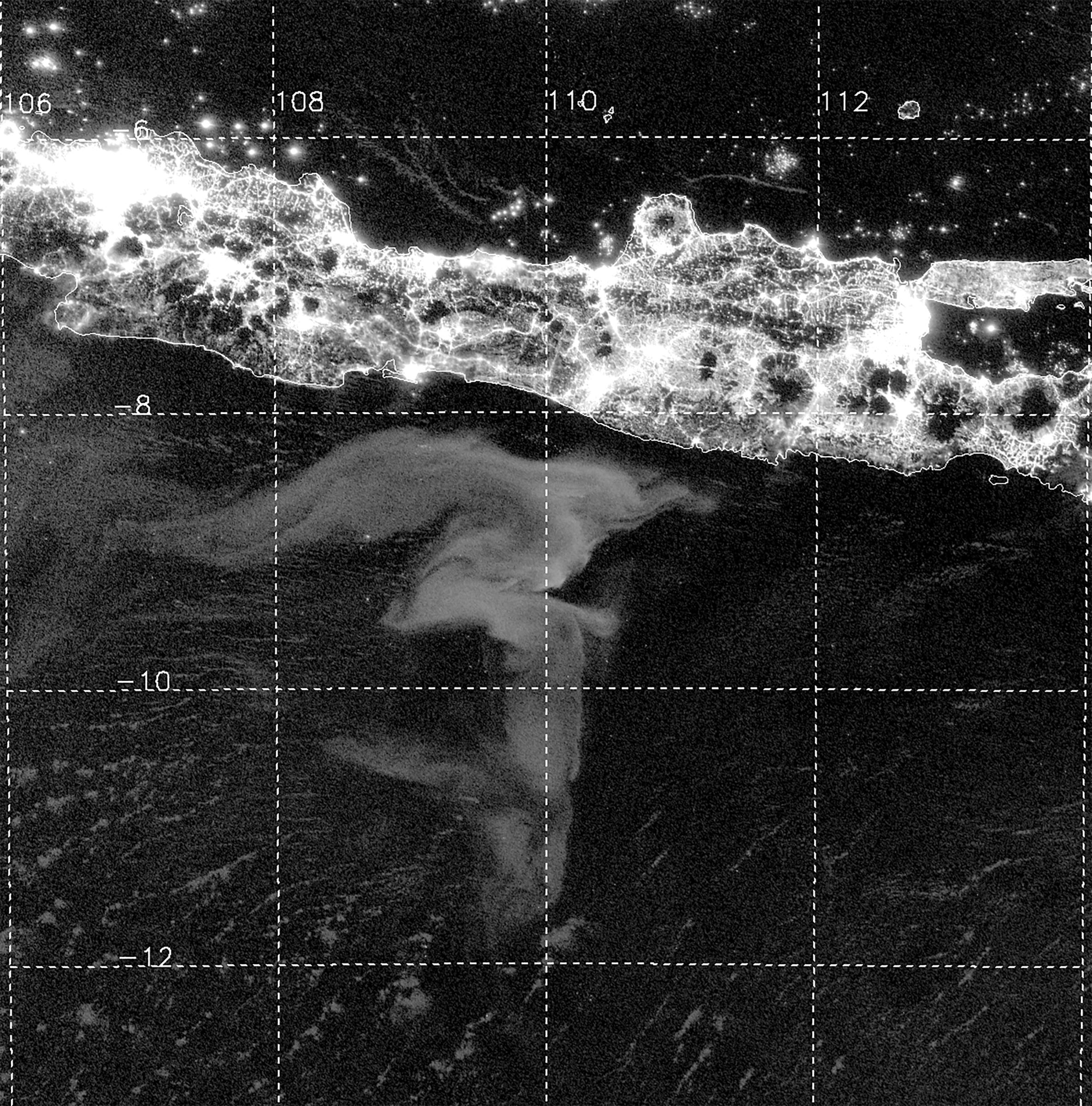
Sailing over Snow
For the U.S. Navy, marine bioluminescence is a practical concern because a patch of bright seawater can outline a submarine, turning it into an easy target. In the early 2000s Steven Miller, an atmospheric scientist then at the Naval Research Laboratory in Monterey, Calif., began to wonder whether satellite sensors could detect bioluminescence from above. The only sensors capable of observing visible light at night were those in the Operational Line Scan (OLS) system that flew on U.S. Air Force satellites. Miller knew that most surface displays of marine bioluminescence were much too small to register on the sensors, so, on a whim, he searched the Internet for mentions of widespread bioluminescence. He turned up a description of milky seas on the Web site Science Frontiers, an idiosyncratic catalog of “unusual & unexplained” happenings then maintained by physicist William R. Corliss.
Miller, his curiosity piqued, began to collect eyewitness accounts. Among them was a relatively recent report from a British merchant ship, the SS Lima, which had sailed through a milky sea along the Horn of Africa on January 25, 1995. “The bioluminescence appeared to cover the entire sea area, from horizon to horizon,” read the Lima’s log entry, “and it appeared as though the ship was sailing over a field of snow or gliding over the clouds.”
When Miller pulled up the OLS images from the Lima’s location on that date, he initially saw nothing. But when he zoomed in, he saw a faint, comma-shaped smear. “It looked like a finger smudge, but it moved as I moved the figure,” he remembers. Miller found that the edges of the smudge matched the coordinates noted in the ship’s log as it entered and exited the milky sea, which covered nearly 5,500 square miles. When he examined OLS images from the days immediately before and after the Lima’s encounter, he found the same smudge, rotating counterclockwise in concert with local ocean currents. “Okay,” Miller thought, “we can see bioluminescence from space.”
Miller got in touch with Steven Haddock, a marine biologist at the nearby Monterey Bay Aquarium Research Institute (MBARI), to share his findings. Like Miller, Haddock had never seen a milky sea firsthand, but he was familiar with the phenomenon, especially because one of his mentors, marine biologist Peter Herring (now retired), had cataloged hundreds of descriptions of milky seas dating back to Captain Semmes and the Alabama. Haddock, who primarily studies bioluminescence in jellyfish, had spent much of his career trying to get as close as possible to bioluminescent organisms using crewed or remotely operated deep-sea submersibles. He and Miller began to collaborate.
Although the OLS detection from 1995 had been something of a fluke—the product of Miller’s persistence and a fortuitous satellite position—Miller hoped a new, more sensitive low-light visible-spectrum instrument called the day-night band (DNB) sensor would allow a systematic survey of milky seas. The sensor, launched in 2011, now rides on two satellites more than 500 miles above Earth’s surface, each orbiting the planet daily. More than 100 times as sensitive as the OLS, the DNB can easily pick up the gleam of a milky sea. But it can also pick up the faint “airglow” produced by the absorption of ultraviolet light in the upper atmosphere, some of which is reflected by clouds. “There were clouds everywhere. The airglow is emitting upward, and sometimes it makes this really diffuse, widespread veil of light,” Miller explains. Differentiating bioluminescence from these other phenomena, he adds, “took us many years of looking at what seemed like very noisy imagery.”
Thanks to the long history of sightings by mariners, Miller and Haddock knew that the occurrences of milky seas peaked in winter and summer and that they were most often reported in the northwestern Indian Ocean, where both the Alabama and the Lima had encountered them, as well as around Indonesia, in particular near the island of Java and in the Banda Sea. Narrowing his search to these seasons and locations, Miller analyzed DNB data collected on moonless nights from 2012 through 2021, eventually identifying a dozen events that were not clouds or airglow, were invisible during the day and drifted with the currents over multiple nights. One 2019 event, detected just south of Java, was visible for at least 45 nights and covered almost 40,000 square miles—an area the size of Kentucky. Its multiweek persistence suggests that the DNB sensor could be used to dispatch researchers to newly formed milky seas in time to conduct dives in them. “[There’s] only so much you can do from spaceborne measurement,” Miller says. “You can’t get into the water, you can’t see the vertical structure of the glow within water, you can’t sample the critters, you can’t measure the detailed chemistry. [For] all these things, you need to be in the middle of it to truly understand.”
While Miller waits for the chance to be in the middle of a milky sea, he continues to expand his collection of sightings. A recent addition comes from Sam Keck Scott, who in the summer of 2010 helped to sail a restored Dutch ketch from Malta to Singapore, crossing the Arabian Sea. One evening in late July, as Scott began his watch, he noticed an odd radiance in the air. After a few minutes he realized that even though the sky was completely dark he could see the boat’s sails and hull; the entire ocean had brightened and seemed to be shining from within. Scott and his crewmates sailed through the milky sea for about four hours, exiting it even more suddenly than they had entered. “We knew it was bioluminescence of some kind, but it was on this wild, wild scale, unlike anything I’d ever seen before,” Scott recalls.
Burglar Alarm
From a distance, scientists have proposed various hypotheses about how milky seas form. Investigators on the 1985 navy expedition theorized that the bioluminescent bacteria they collected had congregated around an algal bloom. Other sleuths have since suggested that the steady glow results from “quorum sensing,” the ability of bacteria to communicate through chemical signaling. Once their density is high enough to produce a perceptible collective glow, they sustain a continual shine. But why? Some biologists think bioluminescence in other marine organisms helps them attract food or mates or functions as a kind of burglar alarm, flashing when they are under attack in hopes of attracting the predators of their predators. The glow of quorum sensing in bacteria may act as a different invitation: when a colony runs low on food in the open water, it may glow to encourage nearby fish to come and consume the bacteria, consequently sustaining the bacteria in their guts.
The decade of DNB data complicates the idea that milky seas occur most frequently in winter and late summer. The peaks in milky-sea formation do appear to be strongest in the northwestern Indian Ocean when winter and summer monsoons trigger phytoplankton blooms by bringing deep, cold, nutrient-rich water to the sea surface. Farther east, however, milky seas may be set up by the Indian Ocean Dipole, an El Niño–like pattern of sea-surface temperatures associated with cool, dry conditions and strong winds in the eastern Indian Ocean between May and October. The satellite data also suggest an explanation for why the glow occasionally seems to extend to some depth, creating the perception among mariners that their ship is suddenly floating in light: Miller found that several milky seas occurred in the relative calm between large ocean eddies, where a combination of currents and temperature gradients can isolate a column of seawater from the surrounding ocean, putting it at a standstill. Such conditions, he hypothesizes, could foster superdense bacterial populations whose quorum sensing extends vertically as well as horizontally to adjacent colonies, magnifying the depth and breadth of the resulting milky sea.
Miller and Haddock hope the DNB sensors’ ability to detect—and, in time, perhaps predict—milky seas will allow researchers to quickly head out to the ocean and collect samples to test hypotheses. Until then, milky seas are unlikely to give up their lingering mysteries.
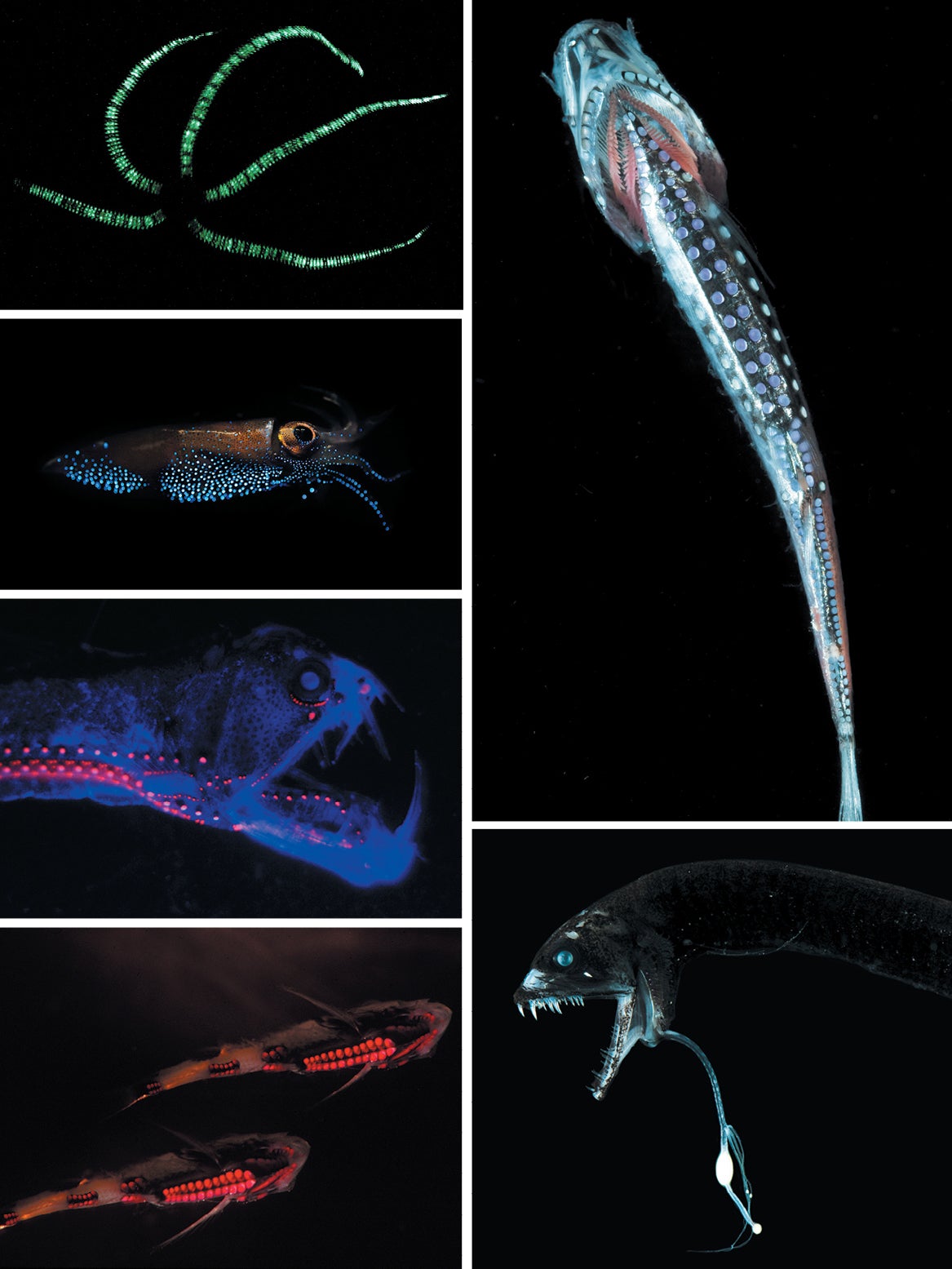
Everywhere aglow
The secrets of milky seas persist in part because much larger questions remain about the nature, function and extent of bioluminescence itself. Since most bioluminescent organisms live in the ocean, many at great depths, observing bioluminescence firsthand has required considerable resources—and not inconsiderable risk. Marine biologist Edith Widder, who founded the Ocean Research and Conservation Association in 2005, began her pioneering bioluminescence studies in the 1980s. She recounts her numerous and occasionally hair-raising submersible experiences—including a life-threatening leak at a depth of 350 feet—in her 2021 book, Below the Edge of Darkness. “I’ve spent a lot of my career in submersibles, operating in the dark” because only very recently have cameras been able to perceive both the light and the color of bioluminescence, she told me. “It’s absolutely, breathtakingly beautiful, and finally [other people are] getting to see it.”
Widder and other researchers who have managed to take deep-sea voyages have known for decades that bioluminescence is a common ability. But the first reliable estimate of its occurrence came in 2017, when Haddock and Séverine Martini, then a postdoctoral researcher at MBARI and now at the Mediterranean Institute of Oceanography, published an analysis of 17 years of video observations collected by remotely operated vehicles off the California coast. From more than 350,000 observations, which included more than 500 groups of organisms, taken at depths from just below the surface to nearly 13,000 feet, Martini and Haddock concluded that at least three quarters of the organisms were capable of bioluminescence. The percentage remained remarkably consistent at different ocean depths. In a 2019 study, they found that about a third of the organisms living on the ocean floor are bioluminescent. Martini identified a carnivorous sponge that was not only new to science but the first documented case of bioluminescence in its phylum.
Given that the ocean is the largest living space on the planet, the two analyses suggest that bioluminescence is one of the predominant ecological traits on Earth. “It’s not something far away that you’ll never see in your life,” Martini says. “At sea, everything is glowing—you just have to pay attention.” For Martini, Haddock, Widder and the few other marine bioluminescence researchers, the pervasive glow only increases their interest in its ecological functions, evolutionary history, chemistry and genetics—and their excitement about the high-definition underwater cameras and advanced genetic sequencing that offer new ways of accessing a once all but inaccessible world.
Humans have benefited greatly from bioluminescent species. Medical and biological researchers frequently use green fluorescent protein, which biologists isolated from bioluminescent jellyfish in the 1960s, as a visual marker of proteins and the components of living cells. Widder is using bioluminescent bacteria to identify pollution hotspots in Florida’s Indian River Lagoon, one of the most diverse estuaries in North America. Fertilizer and pesticide runoff from farms and lawns, as well as leakage from sewage and septic systems, has been poisoning the lagoon for decades, and the pollution has accumulated in its sediments. Because most pollutants interfere with bacterial respiration and therefore with bacterial bioluminescence, Widder and her colleagues have taken sediments from the lagoon and mixed them with bioluminescent bacteria in the lab to determine the relative concentrations of pollutants throughout the lagoon—knowledge that helps in monitoring, mitigation and restoration efforts.
Although applications are expanding, the ability of marine organisms to benefit from their own bioluminescent capacity is under threat. The rush to mine valuable metals from the ocean floor is expected to tremendously impact not only the seabed but the entire deep sea, where the water is typically clear enough for bioluminescent organisms to communicate with one another across hundreds of feet. When robotic mining vehicles scrape the seafloor, they kick up clouds of sediment. After machines pump collected material to the surface and remove the fist-sized, metal-rich nodules, they dump the remaining mud and silt back into the sea, again clouding once transparent water—inevitably disrupting communication among the bioluminescent organisms and interfering with their ability to find food and mates.
“In the context of ocean ecology and ocean health, it’s important to understand how widespread and widely used [bioluminescence] is,” says Haddock, who co-authored a 2020 paper on the ecological effects of deep-sea mining. “If you do something that’s going to affect that process, it’s going to have all these ripple effects that we can only now start to appreciate.” The glowing seas that so terrified generations of mariners have taken no victims and left no traces; the cloudy seas created by humans, however, could permanently dim the ocean’s light.
